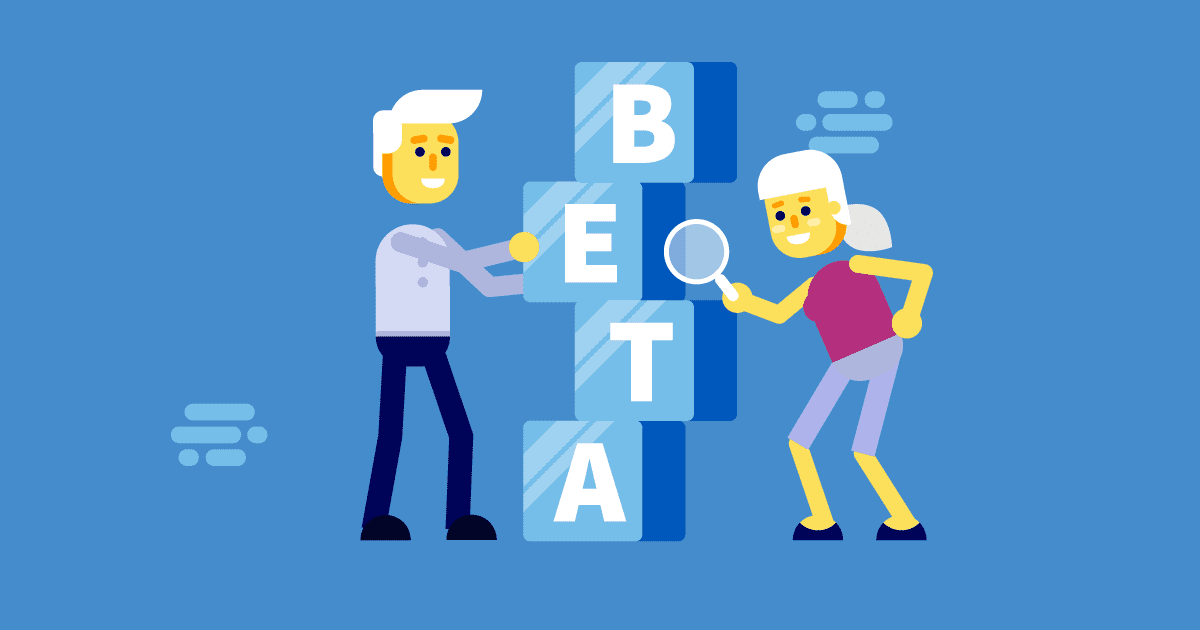It is vital to know when planning a software release, that it will work as intended when in the hands of real users. What is Beta Testing? It’s a testing method of finding out before a full launch, how the software performs when used by people.
Beta testing is a form of user acceptance testing and takes place after alpha testing. Usually, alpha and beta tests are part of the same test schedule. In this kind of testing, a so-called beta version, a system with limited features of the software, is released for use by a set of external users to determine the software’s quality and overall customer satisfaction. Beta testing is the final step in the quality assurance process, and it focuses on identifying issues from a customer’s viewpoint. Feedback received from the spread of different users aids in enhancing the product because it helps in catering to different expectations and behaviors.
The Benefits of Beta Testing
To be successful, beta testing needs to involve different ranges and types of end-users. By consulting a varied pool of beta testers, the end product will benefit by being refined to incorporate the different user perspectives. One objective is to ensure that things work accurately for every potential user.
It’s not always possible to identify all bugs in a non-production environment. Beta tests help to isolate any bugs and issues that may have been missed during earlier testing phases, which if left, could severely impact the quality and stability of the software.
Beta testing helps with achieving these important software factors: Usability, Accessibility, Performance, Stability, Security, and Reliability.
- Usability – Usability measures the ease of using the software. During the testing, several users access and use the software. One of the parameters reported back includes how easy or difficult the software is to use.
- Accessibility – Accessibility means access for all users, regardless of any technological or physical limitations. Ideally, the software or the product must work on a different range of devices, OS, and platforms. Beta testing helps check the real-world compatibility of the software and can help to correct and enhance the product to be compatible with all possible platforms.
- Performance – How software performs relies a lot on real-world circ*mstances that can have an effect on its usage. This kind of testing makes it possible to obtain performance reports from testers based on different situations with variable connections.
- Stability – Beta testing helps to ensure the software works flawlessly under different circ*mstances. During the beta test, developers monitor every system crash and take respective actions to rectify the problem. When an application is deemed ready to be tested, it will be assumed to be stable. Still, sometimes, there are certain factors that will trigger an issue to become apparent under specific conditions.
- Security and Reliability – Secure and reliable products will achieve maximum customer retention. Beta tests help acquire information about any security lapse and how reliable the user considers the software to be.

How to Plan and Conduct Effective Beta Testing
Beta testing differs from other types of testing. Because it involves working with people outside of the usual testing team, there are a number of areas that need to be prepared in advance.
- Product Readiness – Before starting the beta tests, development must be complete, and the software stable. The beta version of the application may or may not include all features.
- Target Platforms – Determining the target platform is an important step, and the decision depends on the type of software. For some products, testing on different browsers may be a critical requirement. For some, it might require running the test on multiple devices. Define the target platforms, including the list of different devices, browsers, and operating systems.
- Testers – The people involved in the beta tests are why this form of testing differs from all other types. In most stages of the software testing cycle, QA testers perform the testing to find bugs, but beta tests require people outside the QA team. The team must include end-users with different roles, devices, and locations so you can achieve the most effective results from the tests. The selected testers provide feedback on the overall usability, customer experience, bugs, and any missing features.
- Monitoring – While beta testing is in progress, monitoring helps gather data about any crash logs and unknown failures. The records provide detailed instances of the steps which help the developer to quickly remediate.
- Evaluate Feedback – Beta testing is not limited to identifying only technical glitches. It can also provide insights into missing features or those which have been included but are probably of no use to end-users. The quality and validity of feedback from beta testers need to be evaluated before making any changes to the system because some of the recommendations might prove beneficial, whereas others may cause adverse effects.
Conclusion
A great deal of market research takes place leading up to the decision to launch a product. This is because its success and effectiveness remains theoretical until successfully tested in the real world. Beta testing gives the software team a platform to test these assumptions by exposing the product to a controlled group before the actual product launch. Therefore, this kind of testing is an integral part of any product launch as it supplies beneficial data on user experience and satisfaction. Largely due to beta testing, a better and more stable product can be released, creating a long lasting and satisfying experience for the end-users.